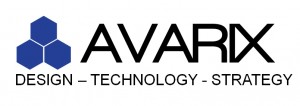 Inspired by a “Hackathon”, a novel consortium made up of IT students and business consultants is helping build fledgling careers and establish reputations across the world.
Inspired by a “Hackathon”, a novel consortium made up of IT students and business consultants is helping build fledgling careers and establish reputations across the world.
Linked to the University of Strathclyde, Avarix has already worked with some of the world’s largest companies. Here, Gavin Tosh of Clerwood Legal Services looks at how they’ve achieved that success.
Avarix is a consortium comprising computer science students at the University of Strathclyde and business consultants with their own companies who work part time for the university’s Enterprise Hub.
The initial idea for Avarix came from a cross-university “Hackathon”, where several universities collaborated to tackle a real-life technical challenge for an external organisation using video conferencing.
The success of this collaboration prompted an approach to Co-operative Development Scotland to form a formal consortium. With the help expert advisers – myself and Gill Joy of Intend Business Development – the consortium successfully formed and was incorporated on 31st January 2015.
This model helps Avarix capitalise on the significant technical talent amongst the computer science students by allying them with external business expertise in one commercial entity.
 While work for external customers was being undertaken by individuals already, including for big name companies such as JP Morgan, Barclays, VISA, Amazon, SkyScanner and the Mozilla Foundation, the experts did not have the capacity to handle multiple requests or more complex jobs. Being part of the consortium removes this constraint and offers greater capacity for work.
While work for external customers was being undertaken by individuals already, including for big name companies such as JP Morgan, Barclays, VISA, Amazon, SkyScanner and the Mozilla Foundation, the experts did not have the capacity to handle multiple requests or more complex jobs. Being part of the consortium removes this constraint and offers greater capacity for work.
The consortium has already delivered several benefits for members. In the first three months of trading alone, Avarix secured orders worth over £150k.
Bringing together the varying skills of members means Avarix can pursue wider business opportunities and bid for different kinds of work. To help cope with peaks in demand and grow the customer base, the core group wanted to be able to formally involve other students in the business.
The consortium co-operative provided a flexible membership structure, allowing students to both carry out work and potentially join the consortium as associate or full members.
Inevitably some student members will need to leave for various reasons, such as gaining full-time employment out-with Scotland. The consortium cooperative makes this process easy, unlike say a company limited by shares.
Having access to funding and reduced operating costs provides a stable financial base and student members benefit from good business experience. Combining resources means members have a greater overall marketing budget, which has helped attract new business.
The external consultants will share in the commercial success of the team but can still manage and grow their own businesses independently.
With early signs of success, more clients in the pipeline and students keen to be a part of Avarix,
could this be a model which can be replicated in other Scottish universities and colleges in sectors other than IT/computer science?